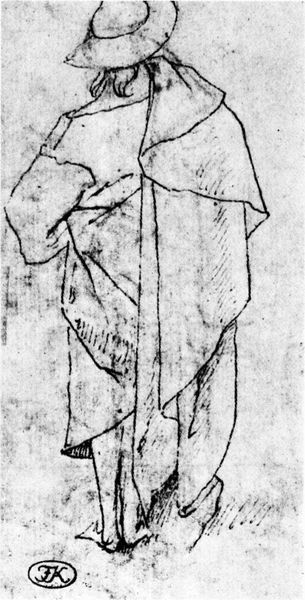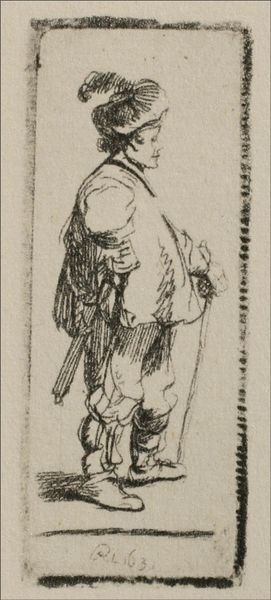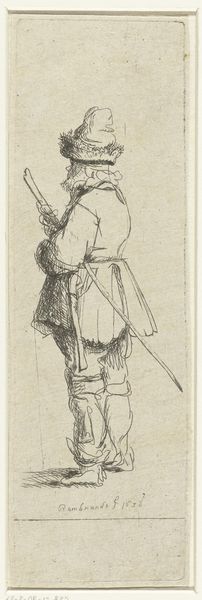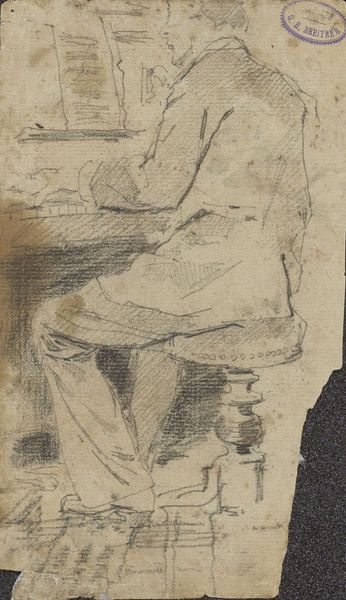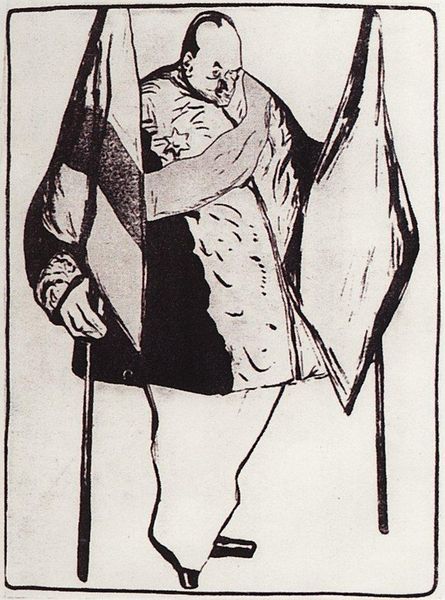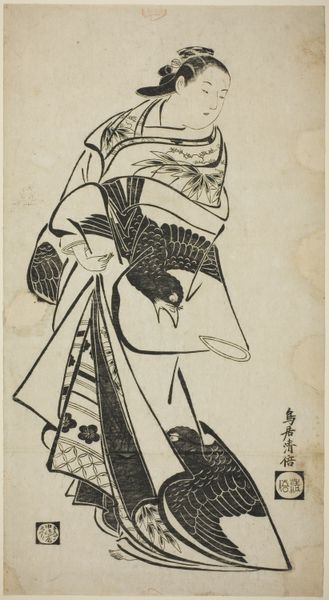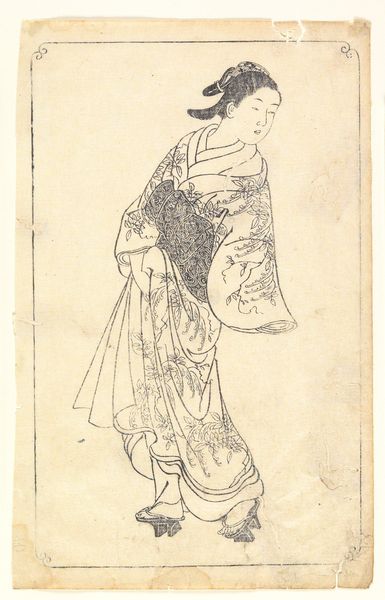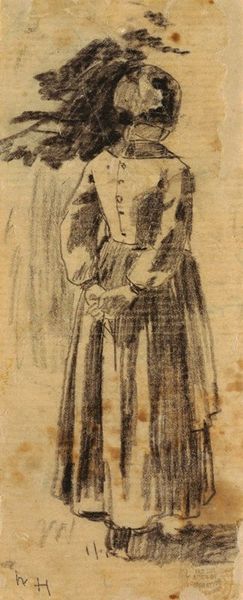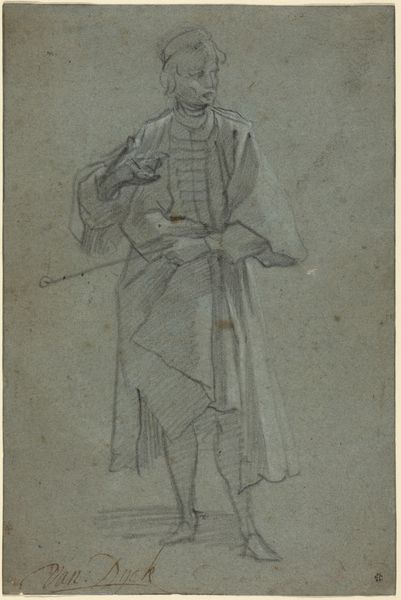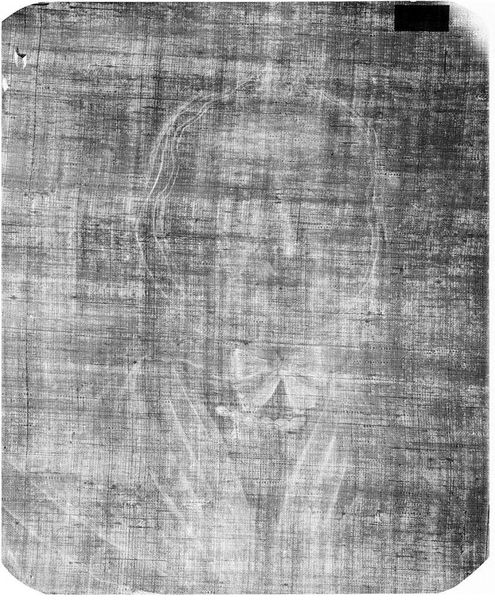
drawing, ink
#
portrait
#
drawing
#
caricature
#
charcoal drawing
#
ink
#
pencil drawing
#
expressionism
#
abstraction
Dimensions: 15.5 x 12.5 cm
Copyright: Public domain
Editor: Here we have "A Child," a drawing from 1904 by Theo van Doesburg, seemingly rendered in ink and charcoal. I'm immediately struck by its abstract qualities. It's barely representational, yet the title clearly indicates a portrait. How should we interpret such a stylized portrayal in its time? Curator: It's interesting to consider how "A Child" reflects evolving notions of childhood at the turn of the century, specifically in relation to the burgeoning Expressionist movement. Van Doesburg presents us not with a sentimentalized depiction, but with a raw, almost unsettling interpretation. The abstraction pulls away from traditional portraiture and potentially towards revealing more profound internal states, questioning societal expectations placed upon children. Do you see that commentary emerging from his stylistic choices? Editor: That's a compelling point about the break from sentimentalism. I hadn't considered the social commentary embedded within the abstraction. So you’re saying it's less about the literal likeness, and more about making a statement about the period? Curator: Exactly! It is in many ways an avant-garde visual statement that challenges prevailing academic approaches to portraiture and possibly the expectations around portraying innocence or purity that were often associated with images of children in the Victorian era. By fragmenting the form, is he also questioning established power dynamics, even subtly resisting those in a position of authority who commissioned or dictated artistic styles at the time? Editor: Fascinating. I initially saw only abstraction, but now I see how the work acts as a challenge to conventions of portraying children. Curator: Indeed. This subversion really pushes us to examine the socio-political currents influencing not only art, but childhood itself. We understand the drawing’s significance much more clearly through that lens. Editor: I will never look at seemingly simple portraits of children the same way again! Curator: And that is how art expands our awareness of social structures through aesthetic shifts!
Comments
No comments
Be the first to comment and join the conversation on the ultimate creative platform.
